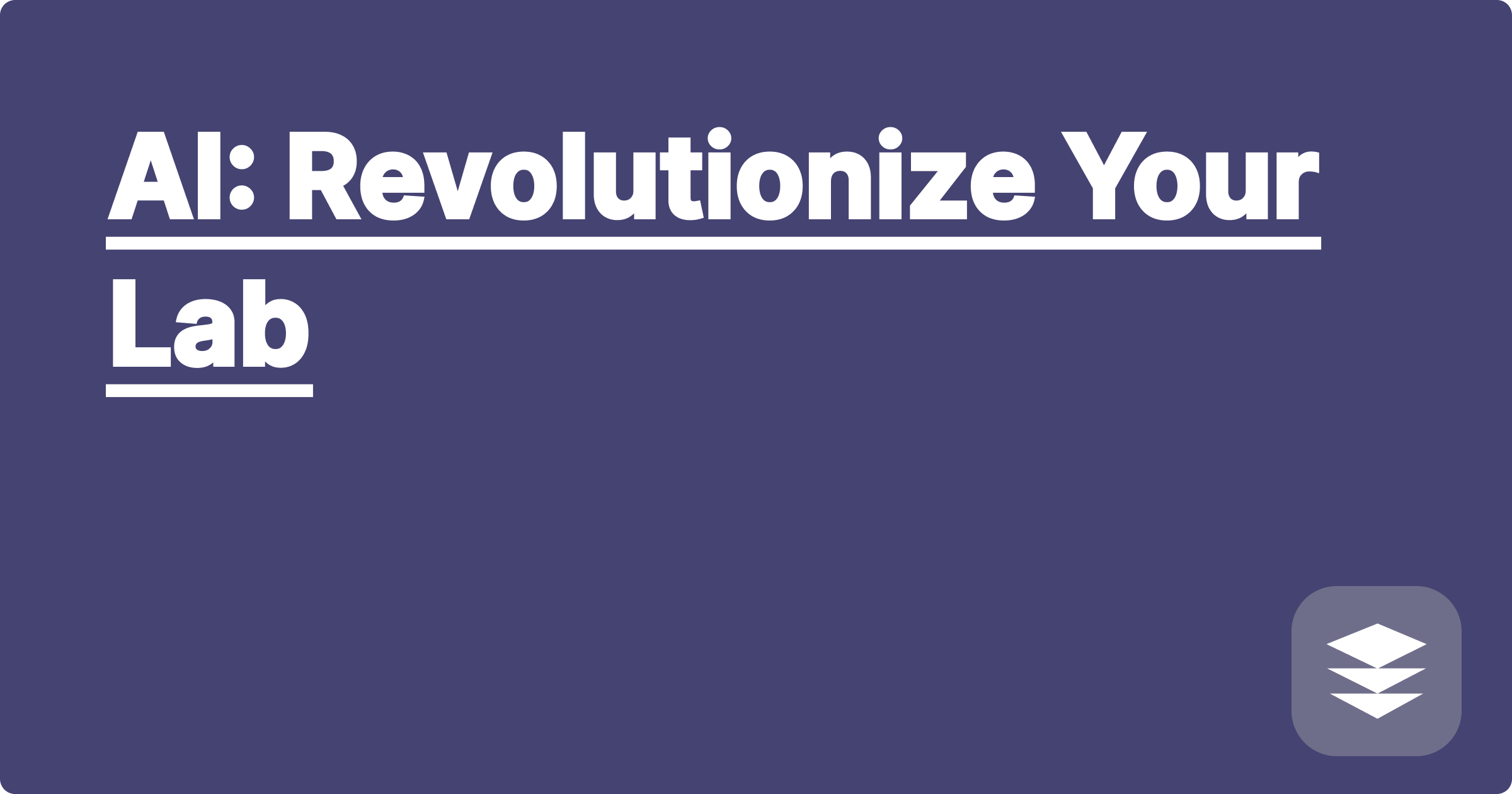
The modern STEM landscape presents researchers with an overwhelming deluge of data, complex computations, and tedious manual tasks. This often hinders scientific progress and can lead to burnout. Artificial intelligence offers a powerful set of tools to address these challenges and revolutionize how we conduct research, analyze data, and even design experiments. AI can automate repetitive tasks, extract insights from massive datasets, and accelerate the pace of discovery, freeing up researchers to focus on higher-level thinking and creative problem-solving.
This shift towards AI-driven research has profound implications for STEM students and researchers. Embracing these technologies is no longer optional; it's becoming essential for staying competitive and pushing the boundaries of scientific knowledge. Learning to effectively leverage AI tools like ChatGPT, Claude, and Wolfram Alpha can significantly enhance productivity, improve research outcomes, and unlock new avenues of exploration. This guide will explore how AI can transform your lab experience and provide practical strategies for incorporating these powerful tools into your workflow.
One of the most significant challenges in modern STEM research is the sheer volume of data generated by experiments and simulations. Analyzing this data can be incredibly time-consuming and often requires specialized expertise in programming and statistical analysis. Traditional methods may struggle to identify complex patterns and relationships within these large datasets, potentially leading to missed insights and slower progress. Furthermore, many lab procedures involve repetitive manual tasks, such as sample preparation, data entry, and literature review, which can be tedious and prone to human error. These tasks divert valuable time and resources away from more critical aspects of research, such as experimental design and data interpretation. Finally, staying up-to-date with the rapidly expanding scientific literature can be a daunting task, making it difficult for researchers to identify relevant information and connect with other researchers working on similar problems.
AI offers a transformative solution to these challenges by providing powerful tools for automating tasks, analyzing data, and accelerating research. Large language models (LLMs) like ChatGPT and Claude can be used to automate literature reviews, generate research summaries, and even assist with writing manuscripts. These tools can quickly sift through vast amounts of text, identifying relevant articles and extracting key information, saving researchers countless hours of manual effort. For complex computations and data analysis, Wolfram Alpha provides a comprehensive computational engine that can handle symbolic calculations, statistical analysis, and data visualization. This can empower researchers to analyze complex datasets, identify trends, and generate insightful visualizations without needing extensive programming skills. Furthermore, AI-powered tools can be integrated into lab automation systems to streamline workflows and reduce manual errors in tasks like sample preparation and data entry.
Integrating AI into your research workflow can begin with simple steps. Start by identifying specific tasks that are time-consuming or prone to error, such as literature reviews or data entry. Then, explore how AI tools like ChatGPT or Claude can be used to automate or streamline these processes. For example, you can use ChatGPT to summarize research articles, generate keywords for literature searches, or even draft sections of your manuscript. When dealing with complex calculations or data analysis, Wolfram Alpha can be an invaluable resource. Input your equations or data into Wolfram Alpha, and it can perform the calculations, generate visualizations, and even provide step-by-step solutions. To further streamline your workflow, consider integrating AI-powered tools into your lab automation systems. This can automate tasks like sample preparation and data entry, freeing up your time for more critical aspects of your research.
Consider a researcher studying the effects of a new drug on cell growth. They could use Wolfram Alpha to analyze the growth curves of different cell populations, calculate statistical significance, and generate visualizations to illustrate the drug's impact. The formula for exponential growth, N(t) = N₀e^(rt), where N(t) is the population size at time t, N₀ is the initial population size, r is the growth rate, and t is time, can be directly inputted into Wolfram Alpha for analysis. Another example involves a researcher conducting a literature review on a specific protein. They could use ChatGPT to summarize key findings from relevant articles, identify common themes, and even generate a preliminary outline for their review paper. Furthermore, researchers can use AI-powered image analysis tools to automatically identify and classify cells in microscopy images, significantly speeding up the analysis process.
To effectively integrate AI into your academic work, it's crucial to develop a strategic approach. Focus on identifying specific areas where AI can provide the most significant benefits. Don’t try to implement everything at once; start with small, manageable projects and gradually expand your use of AI as you gain experience. It’s also important to remember that AI tools are meant to augment, not replace, human expertise. Always critically evaluate the output of these tools and ensure that the results align with your understanding of the scientific principles involved. Finally, stay informed about the latest advancements in AI and explore new ways to incorporate these tools into your research workflow. Continuous learning and adaptation are key to maximizing the benefits of AI in your academic pursuits.
In conclusion, AI is rapidly transforming the landscape of STEM research and education. By embracing these powerful tools, researchers can significantly enhance their productivity, accelerate the pace of discovery, and unlock new avenues of exploration. Start by identifying specific areas where AI can provide the most significant benefits and gradually integrate these tools into your workflow. Remember to critically evaluate the output of AI tools and continuously explore new ways to leverage their capabilities. The future of STEM research is AI-driven, and the time to embrace this revolution is now.
AI: Your Coding Homework Buddy
AI: Automate Engineering Tasks